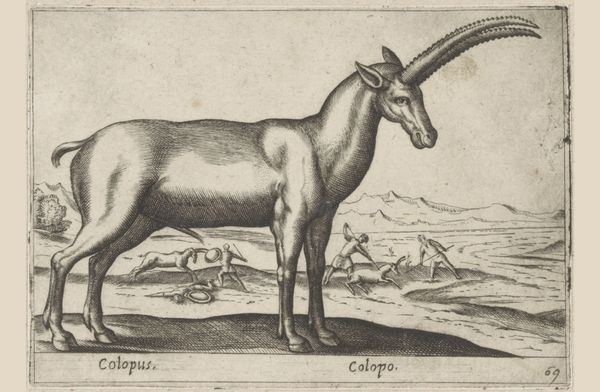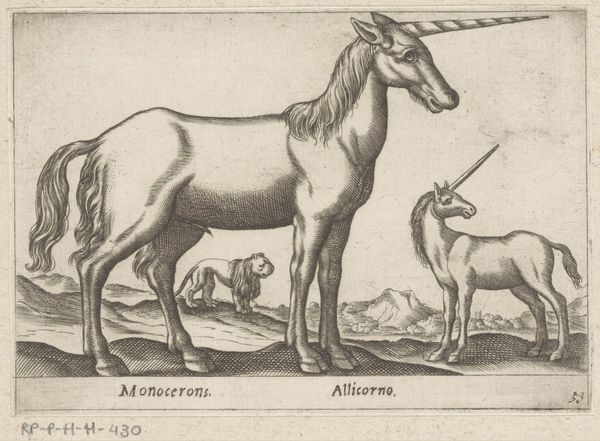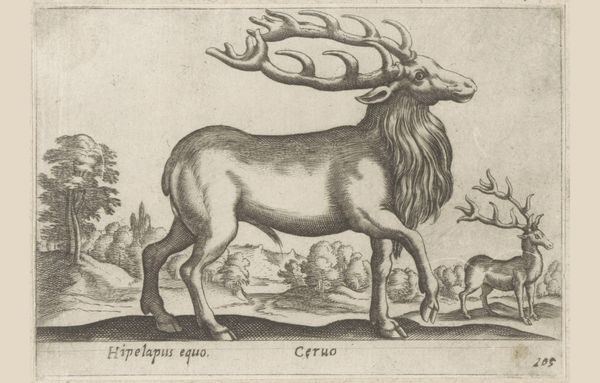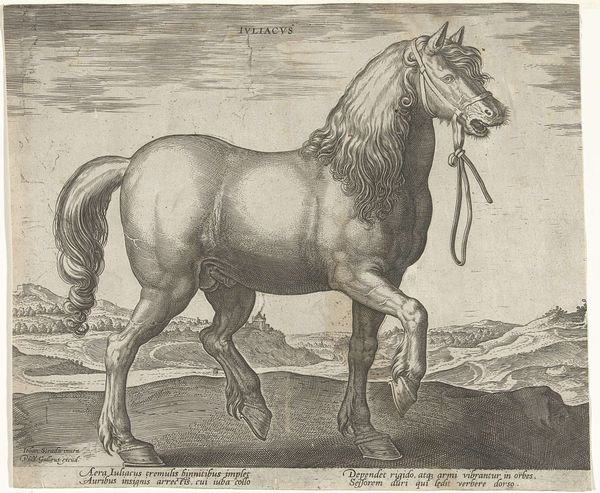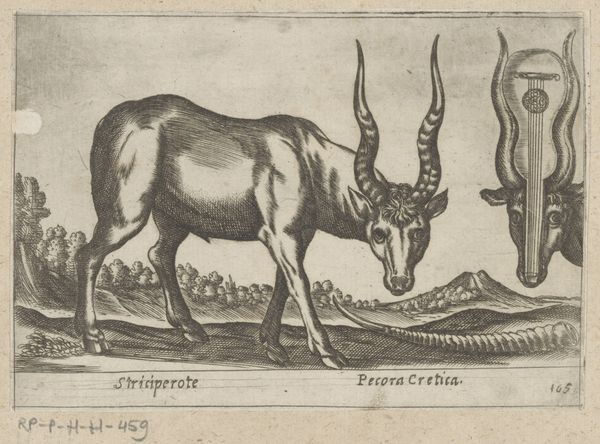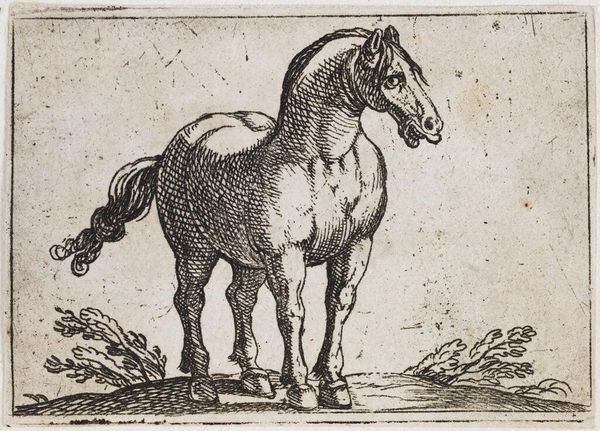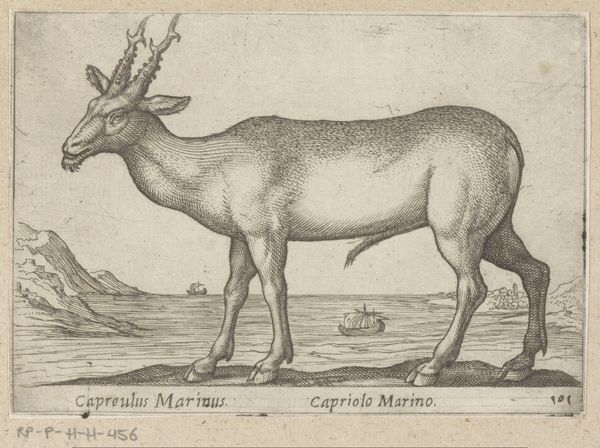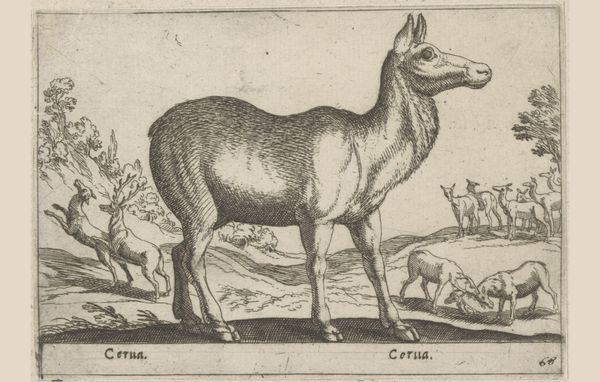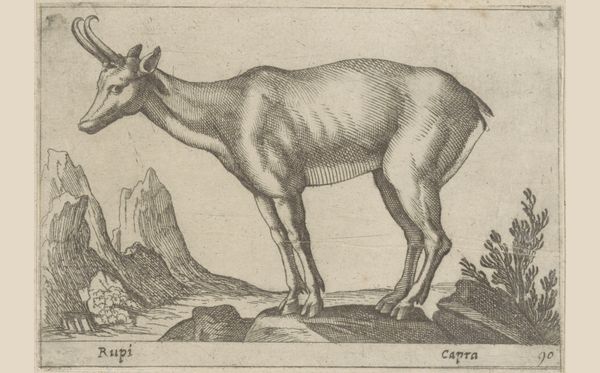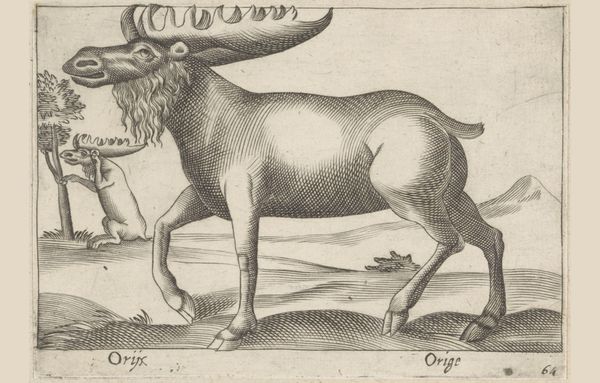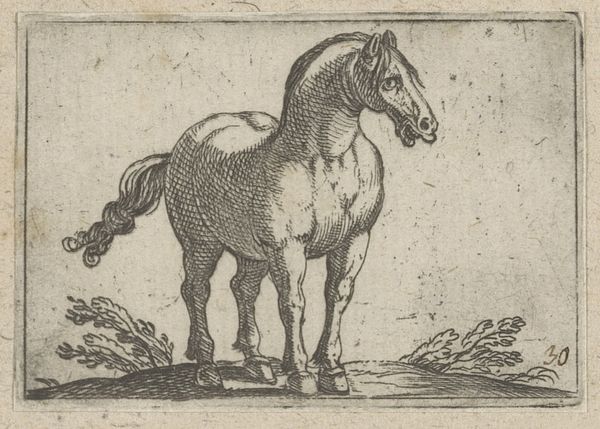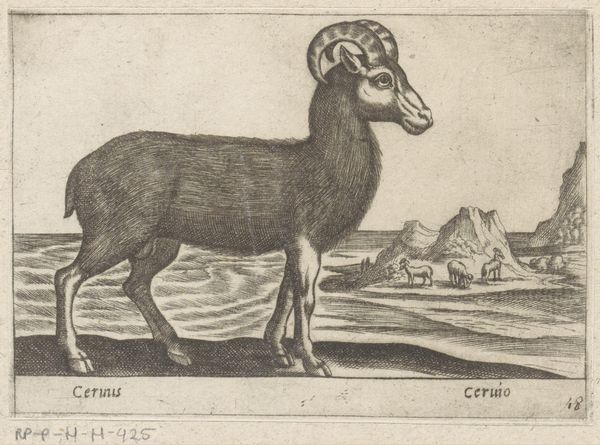
print, engraving
#
baroque
#
animal
# print
#
landscape
#
figuration
#
history-painting
#
engraving
Dimensions: height 95 mm, width 137 mm
Copyright: Rijks Museum: Open Domain
Editor: This engraving, "Steenbok als zeedier," or Capricorn as Sea Creature, made before 1650 by Antonio Tempesta and housed at the Rijksmuseum, presents quite an image! A Capricorn with webbed feet and a unicorn's horn stands in what appears to be a shoreline. There is something dreamlike and slightly absurd about this chimera. What are your thoughts on what this image represents, conceptually or artistically? Curator: Dreamlike and absurd is spot on! I find this image, like a lot of Tempesta’s work, to be a playful investigation of the natural world as it meets the imagination. It’s almost like a visual riddle, isn't it? The Capricorn itself is a zodiac symbol, associated with winter and earth, yet here it's transformed into a maritime creature. It makes you wonder what world Tempesta was trying to create. What do the merging of earth and water elements, tell you? Does this perhaps point to a world of possibilities where these natural associations are defied, where boundaries, like coastlines, blur and merge? Editor: That's fascinating! I hadn’t considered the alchemical potential within what at first glance just seemed a quirky depiction. It also strikes me now, given the period, this exploration must have pushed against rigid definitions. Curator: Absolutely! Tempesta was known for his dynamic compositions, often populated with hybrid figures. Do you find yourself questioning our human tendency to categorize and define nature, when encountering something so whimsical and undefinable? Editor: Yes, the piece prompts that reflection, pushing the boundaries of categorization. I initially saw strangeness; now, I see the beauty in questioning definitions. Curator: And sometimes, the strangest images offer the deepest reflections on ourselves and how we perceive the world around us.
Comments
No comments
Be the first to comment and join the conversation on the ultimate creative platform.
